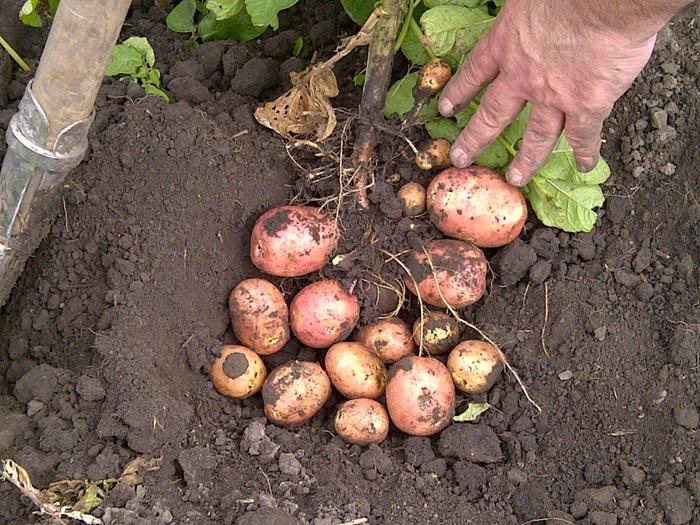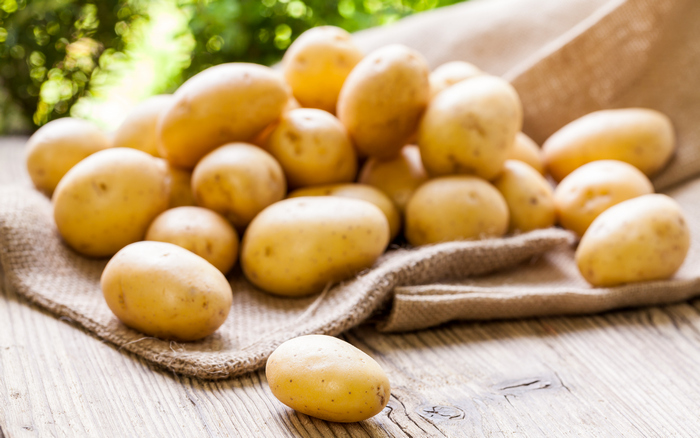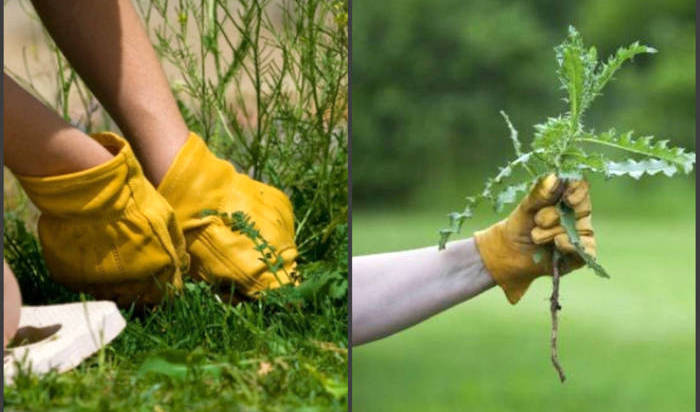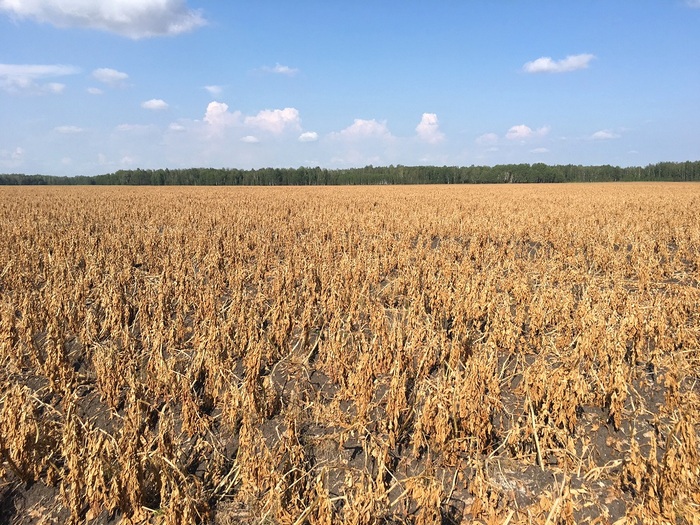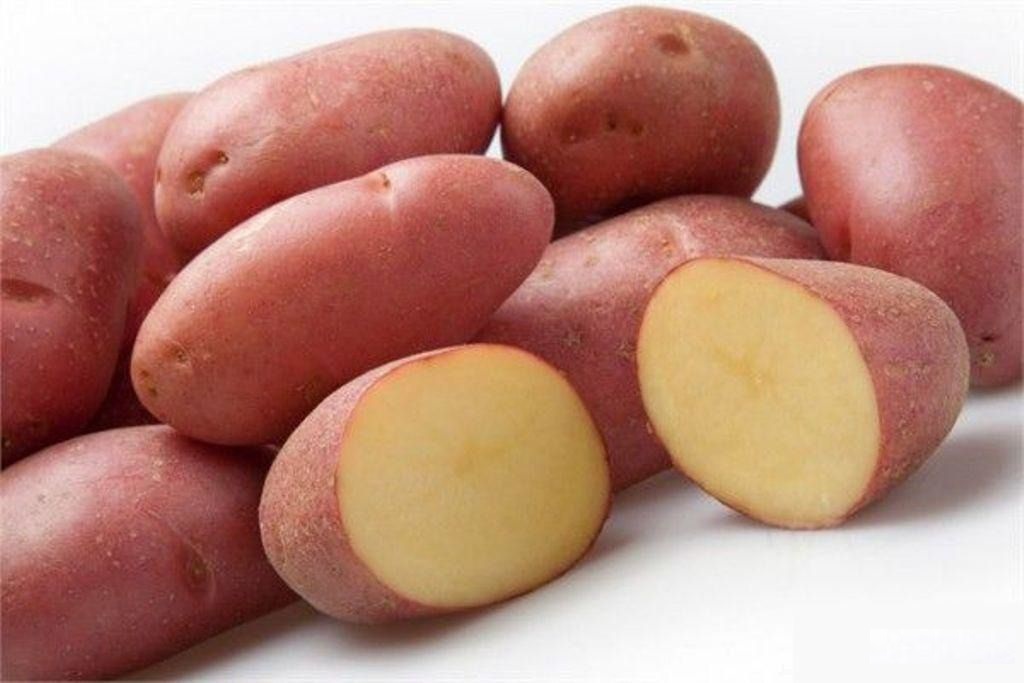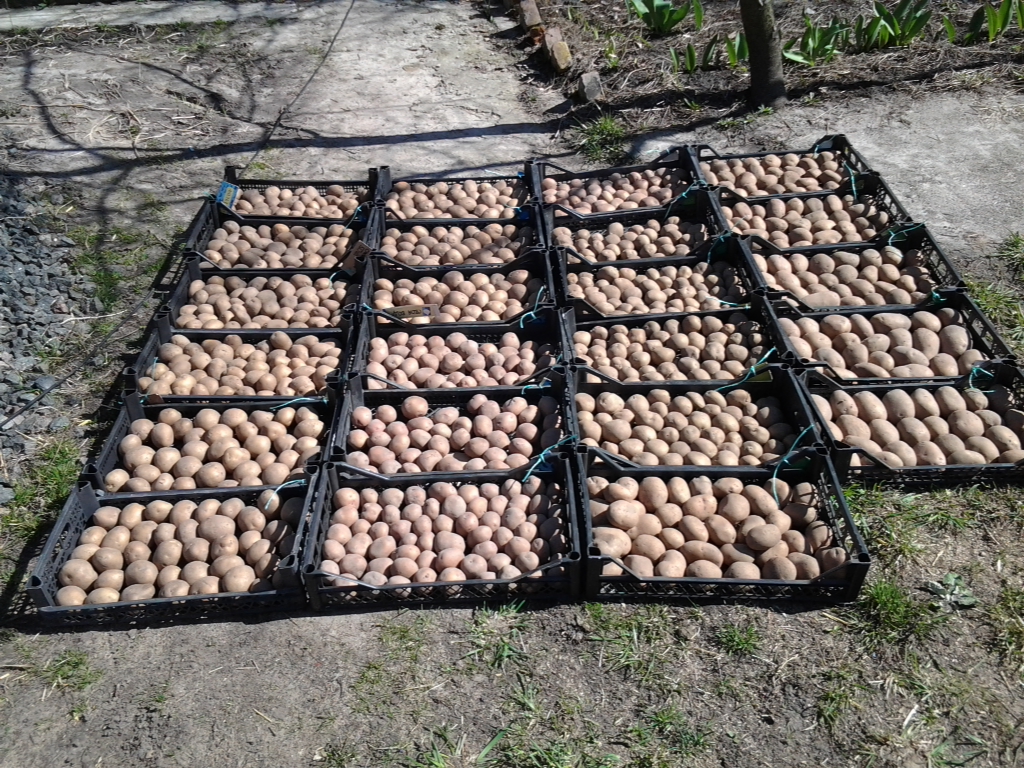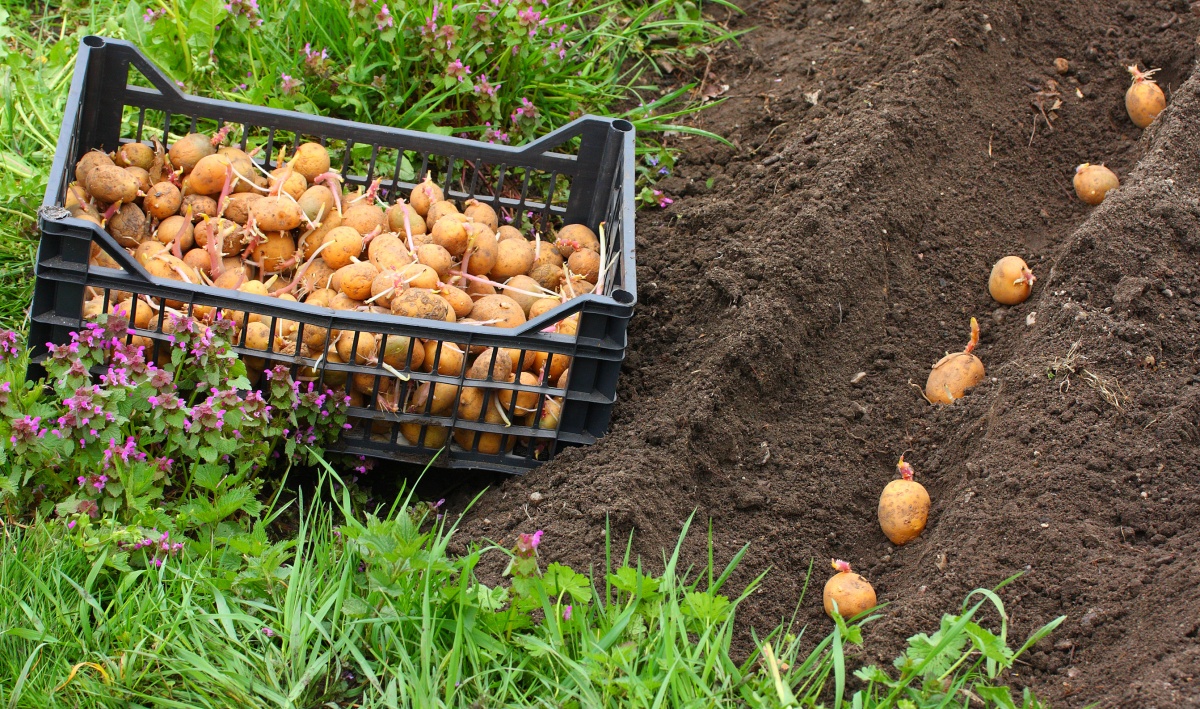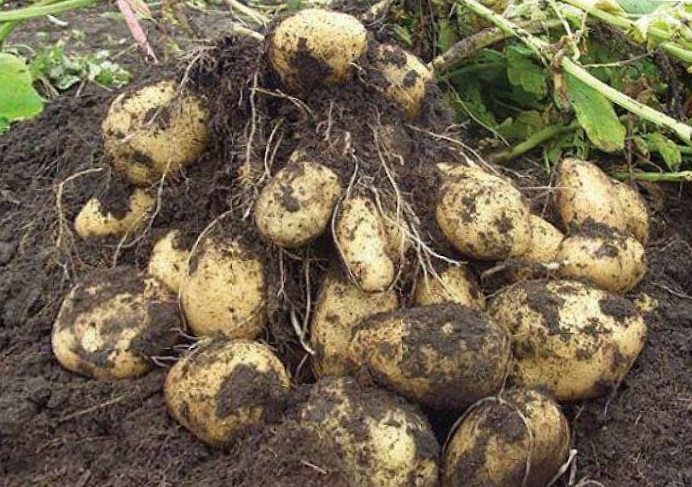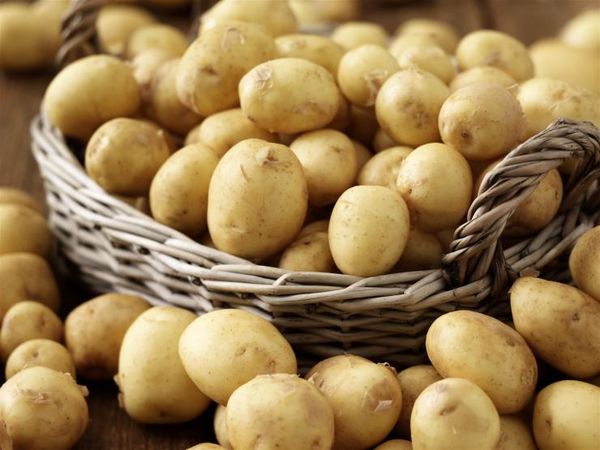Content:
One of the most common crops cultivated by a modern summer resident is potatoes. Naturally, everyone strives to get a rich harvest, but this is impossible without observing the basic rules of agricultural technology for growing potatoes. You can cultivate potatoes wisely without weeding and hilling, adhering to a certain technology for growing this crop.
Features of potatoes as a crop
In our country, potatoes are very common, the tubers of table crops are used as food for humans, and are also fodder for animals and have a certain technical value (production of glucose, alcohol, starch and syrup products, and so on).
The potato got such distribution due to its composition. The tubers contain about 35% dry matter:
- 12-22% starch;
- 1.4-3% protein;
- 0.8-1% ash substances.
Potatoes are also rich in vitamins C, B1, B2, B6, PP, K and carotenoids. Therefore, for many there is an acute question of how to grow a large, good harvest of potatoes.
Potatoes belong to crops that prefer a temperate climate and plenty of light for a comfortable state. With a lack of the latter, there will be few tubers, and their quality will leave much to be desired. Potatoes are quite picky about moisture, and the need for water depends on the phase of culture development.
This crop is grown in the open field; you rarely see planting potatoes in a greenhouse.
Landing features
Each stage of the potato cultivation technology is of great importance in obtaining a good harvest. The first stage is planting the culture, if done correctly, the probability of obtaining the desired result increases significantly.
Soil selection and preparation
First of all, it is important to correctly determine the site for planting potatoes, since it must be well protected from the cold northerly wind, for example, by the presence of a slope from the south, southwest or southeast side. It is best to opt for dark sandy loam or sandy soils. Farming and cultivation for potatoes in such lands is most efficient. The site should be located in a well-lit area.
Tilling the soil for planting potatoes should be done in early spring (mid-April-early May).
Fertilization
After the autumn digging, fertilizers are applied. If the soil on the site is heavy, then spring fertilization will not hurt.
Many do not know how to fertilize the soil before planting. There are several options here:
- Manure. When choosing this option for organic fertilization, you should remember that the taste of potatoes may deteriorate;
- Peat. In its pure form, such a product will not affect the taste of tubers and yield;
- Compost.It is the most optimal option, especially if it contains both manure and peat in the same proportion.
It is permissible to use mineral compositions, but here it is important to choose a composition in accordance with the type and acidity of the soil.
Seed preparation
In many respects, the volume and quality of the crop depends on the correct choice of tubers for planting and their preliminary preparation. Initially, the potatoes should be sorted out, removing all roots:
- Rotten;
- Affected by diseases;
- Defective;
- With a putrid dry or wet crust;
- Too large or too small.
Only healthy, beautiful medium-sized tubers can give a good harvest.
Planting process
Planting potatoes can be done in three ways, the choice of which depends on certain circumstances:
- Ridge planting is recommended for marshy or waterlogged soils with groundwater (for very wet soils, cutting of ridges occurs even in autumn);
- Smooth technology (suitable for loose, moderately moist soil);
- Trench planting is necessary if the site is sandy, dry soils, so that the potatoes are located at maximum depth and feed on moisture from the inside.
But each of them has similar points, which are necessary in any case:
- Compliance with a certain distance between the bushes, depending on the variety;
- Fertilization (when planting, ash and compost are most often used);
- Landing from the south side to the north to provide even light.
When planting, the distance between tubers is maintained at 70 cm (for late varieties) or 60 cm (for early varieties). The row spacing should be 35-36 cm.
Depending on the type of soil, the planting depth is also chosen. With light soil, potatoes are planted to a depth of 10-12 cm, with heavy and loamy soil - 8-10 cm, with clayey - 4-5 cm.
All sizes are for medium sized potatoes (approximately like a chicken egg). If the potatoes are smaller or larger, then the distances are increased or decreased.
Care features
Potato care is not too difficult. It consists in the timely loosening and removal of weeds, as well as processing with special preparations that will help to cope with invasions of pests and crop diseases. If the area is small, then you can perform work, for example, to clear weeds, by hand, but for large areas it is better to use special equipment and chemicals.
Loosening
One of the important points of caring for potatoes after planting and throughout the life of this vegetable in the ground is timely and regular loosening and hilling. Loosening the soil allows the tubers to be provided with a sufficient amount of oxygen, as well as moisture. Loosening during the period of potato growth is carried out in several stages:
- The first loosening of the soil between the rows is carried out almost immediately after planting (5-6 days). This will help destroy the bulk of annual weeds;
- The second loosening is carried out a week after the first before the treatment of the crop with herbicides;
- The third loosening is optional for light soils (it can be carried out at will), but for heavy soils, its implementation should be carried out in any case, before the tops close.
Loosening is performed using various agricultural implements. The suburban area can be processed manually or use a walk-behind tractor. The loosening depth depends on the type of soil.
Loosening depth, depending on the type of soil
| Soil type | Depth (with a lack of moisture), cm | ||
|---|---|---|---|
| First processing | Second loosening | Third loosening | |
| Sandy loam soil | 10-12 (6-8) | 6-8 (5-6) | 6-8 (5-6) |
| Wet medium loamy soils | 14-16 (8-10) | 10-12 (6-8) | 10-12 (6-8) |
When cultivating potatoes, hand weeding for large areas is not relevant. Preference is given to the use of herbicides. Such formulations are capable of suppressing the development of many annual and perennial weeds. As practice shows, if you carry out two pre-emergence treatments of plantings with the help of such preparations, then you can get rid of annual weeds by 75%, and from perennial weeds by 45%.Weed control
When treating potato plantings with herbicides, the following conditions must be observed:
- In order for the drug to be evenly distributed and to begin its action, the soil must be sufficiently moist and free of lumps;
- The ridges should settle after planting;
- Processing is carried out at a temperature of + 12-25 degrees;
- Wind speed - no more than 3-4 m / s.
Watering and irrigation
If there is not enough natural precipitation and the soil is dry, then mechanical irrigation or watering is carried out. Today there are special drum type rain machines. Such units have special nozzles that allow work with unfiltered water. Since the root system of potatoes is not well developed, the slightest drought can adversely affect the yield. Most watering is required during the budding and flowering period. To maintain moisture in the driest areas, straw mulching is carried out between rows.
Harvesting
Before starting to harvest potatoes, it is worth preparing a room where the harvest will be stored. It is important to repair the equipment, as well as to disinfect the premises. Before the mass harvesting of potatoes begins, several bushes are checked for ripeness. To do this, 1-2 bushes are dug out, and it looks like the tubers are separated from the stolons. If the stolons are still alive, then it is better to leave the planting until the moment it ripens.
It is best to harvest the crop after the foliage has completely died out. You can use a chemical method (processing with special compounds called desiccation) to speed up this process. A week before harvesting, the tops are treated with fungicides in order to protect the potato tubers from diseases. Potatoes are dug only 7-10 days after the procedures.
They dig potatoes using special trailed machines. Modern technology also makes it possible to sort the tubers by size. Many farms have similar equipment in their arsenal. In order to preserve the harvest as much as possible, damaged and diseased tubers are removed from the total mass of the crop before storage.
Diseases and features of the fight
Potato diseases are varied, but in general they can all be divided into four main groups:
- Fungal diseases are represented by scab, late blight, alternaria, dry and wet rot, rhizoctinosis, potato cancer and others;
- Among bactericidal diseases, potatoes are most often affected by black leg, ring rot;
- Viral diseases include wrinkled and banded mosaics, curl and spotting, leaf curling;
- Problems in the form of deviations from the norm, which are provoked by external factors, for example, lack of oxygen, potassium, nitrogen.
Some of the diseases of the crop require the complete destruction of the crop and the exclusion of planting this crop on the site. Such quarantine diseases include potato cancer.It costs as much to monitor the state of the plantings as potatoes grow on the site. The main way to fight diseases was and remains prevention. Among the mandatory preventive measures should be highlighted:
- Use only healthy planting material;
- Compliance with the rules when carrying out fertilizers;
- Moderate humidity;
- Primary processing of potatoes before planting with formalin before sprouts appear will help prevent the appearance of scab;
- Timely spraying of tops with copper sulfate, Bordeaux liquid or arcerid will save you from late blight.
Many people forget about such preventive measures, and then they wonder why the potatoes did not begin to bear fruit on time, or the crop turned out to be ugly and of poor quality.
Pest control
First of all, preventive measures will help protect potatoes from pests. Their implementation significantly reduces the risk of unwanted guests:
- In autumn and spring, before planting, you should carefully dig up the soil;
- Before planting, if possible, onion peels should be introduced into the holes;
- Carrying out timely feeding;
- Tubers of early varieties should be planted with those that have already sprouted;
- Collect larvae and caterpillars as soon as they appear.
If large accumulations of pests have appeared on potato plantings, then it is imperative to carry out processing with special compounds. Today, stores offer a wide range of chemical and environmental products.
Most often, potato plantings are infested with the following pests:
- Colorado beetle, to combat which drugs Dilor, Tsimbush, Volaton, bitoxybacillin powder are used;
- Wireworm - traps can be used to destroy it;
- Caterpillars can damage up to 30% of the tops. The danger of their appearance lies in the fact that other diseases may begin to develop in the passages left after the caterpillars;
- Medvedka can damage plantings, as it gnaws through everything in its path. You can fight it by setting traps or using Medvetox;
- Potato nematode appears on roots and tubers. The result of its vital activity will be a slowdown, and in some cases a suspension of the growth of tubers.
If a decision is made to grow potatoes on your site, then you should follow all the rules, tips and recommendations for planting, care and harvesting. The described potato cultivation technology will help to get a good harvest. After all, you can get a good yield of potatoes from 1 are only by observing all the rules. This will help minimize the risk of a poor quality and small crop.
